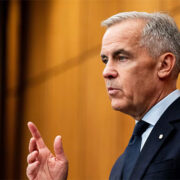It will take a lot more than policy to feed the revolution that aims to curb climate change and achieve lower greenhouse gas emissions. It will require changes in various sectors of business.
This, in retrospect, will mean enormous changes in our daily activities—how we interact and use resources at our disposal. One such resource is energy which, today is a very limited resource generated at tremendous expense and environmental consequence.
While much of Canada’s energy production is by burning fossil fuels (19% according to the Canadian Electricity Association), the fact that solar energy is poised to become a major source of “this” energy production by 2050 is very encouraging to businesses that are trying to make the switch from carbon-based to sustainable sources of electricity. This makes for opportunities in creating jobs and provides the sustainable industry the very unique and rare power to shape our future—with regards to how we produce and consume energy.
The Canadian solar industry is one of the many global solar industries that has received tremendous attention in recent years due to its growth fueled by technological development and investment potential. Today, there are many more solar companies than four or five years ago, involved in the business of using photovoltaic technology to produce energy.
Leading the clean energy sector in Canada is the province of Ontario with 2,700 clean energy technology firms employing 65,000 people (source) and generating annual revenues of more than $8 billion. While, Canada’s provinces are taking command of the nation’s battle against climate change, Ontario just introduced a cap-and-trade system, taking the initiative to put their own policy in place in the face of a reluctant federal government.
The Perspective.
In light of this, PVBuzz’s Editorial Manager Derick Ajumni sat down with John Gorman—the President and CEO of the Canadian Solar Industries Association (CanSIA) to discuss Ontario’s recent policy move and what this means for Canada as part of a global movement. This “sit-down” also provided an atmosphere to ask the questions that will help us to know the man behind Canada’s solar industry.
Derick: What are your thoughts on the state of affairs with regards to solar policy in Canada?
John: From a solar electricity perspective, everything we’ve done since the introduction of the Green Energy Act in 2008 has focused Ontario on an electricity policy and planning discussion and on solar’s place in the supply mix of electricity. That’s what the whole conversation has been about till very recently.
Solar has done remarkably well in the confines of that electricity policy discussion. We know that all these discussions aim to answer the questions about which technology is going to become widely used now that we have phased out coal. Solar energy technology is going to continue playing a big part in that discussion with regards to what it can deliver on the electricity supply front—and that’s good.
Derick: How about your thoughts on the recent cap and trade announcement by the government of Ontario?
John: The exciting thing we see coming out of these climate talks is this new focus on climate policy in Ontario, which is opening up doors for solar to show its value in sectors other than just electricity. A good example is the fact that Ontario has done some really world-leading, enviable things such as being on track to phase out coal—only 8% (source) of our electricity now comes from coal—over such a short period of time. This absolutely astounds the rest of the world. By replacing it with renewable sources of energy such as solar, that actually is a big score on the carbon emissions front.
As a result, when you look at where we can find more carbon emissions through these climate policy discussions, it’s not really the electricity sector that’s going to give us all of the savings because only 9% of our ghg emissions actually come from electricity generation. The big emissions today come from buildings, industrial operations, and transportation.
Derick: How is this going to work specifically or what part can solar play in this policy framework?
John: These mentioned sectors are where the climate policy discussion is targeting—where the carbon emissions pricing is targeting. The fact is that solar electricity, and solar thermal, are uniquely the only generation technology able to empower those sectors (buildings, industrial operations, and transportation) to find new emissions savings.
Let’s take the buildings sector for example. If Ontarians want buildings/residences and office infrastructure to lower their emissions profiles, then that means solar technologies can come into play in order to help them lower their carbon footprint through solar heating and cooling. Plus solar is really the only technology that can do that because it is so “distributable”.
This means that not only is CanSIA participating as a strong player in the electricity planning and supply mix front, but we are now showing sectors and specific areas where solar can help find and meet emissions reductions—which shows the value of solar. Our sole priority right now on the climate policy front is showing how we can make it as easy as possible for each of these sectors to incorporate solar photovoltaics and solar thermal into their operations; so that they can lower their emissions profile.
Derick: Let’s talk a little bit about this policy and the term “carbon pricing”
John: The text book definition of carbon pricing is a method of charging for the right to emit greenhouse gasses into the atmosphere. By placing a price on carbon emissions in each of these sectors (buildings, industry and transportation) they might be inclined to lower their emissions profiles and what we can do in the solar sector is to enable them to use more and more solar to help them achieve the reductions that Ontario would like achieved. We need to get into detailed discussions about how we are going to enable these reductions, and provide incentives for these sectors to adopt solar.
There is also an important part to the carbon pricing discussion: What we are going to do with the revenue from this system? This is a decision that has to be made as a province; to decide where to spend the expected $1 Billion in revenue. Other jurisdictions have demonstrated that the best thing to do is to take these revenues and reinvest them into sustainable technologies. So we are having a dialogue now with the government about reinvesting this revenue into solar enabling technologies such as smart grids, storage, in mechanisms that can make it easy for the industrial sector to adopt solar.
Derick: This could be interesting. It could mean that if the details of this cap-and-trade system are done right, it becomes a virtuous circle where the worst offenders are actually paying penalties into a system that is used to drive down everybody’s carbon emissions.
John: Exactly!
Derick Ajumni: Sure, this is all good. But this is just the case in Ontario—how about Canada as a country?
John: One of the significant things about the cap-and-trade system is that Ontario is just another province that has adopted it—and Ontario is not the first. British Columbia has a carbon pricing regime, Alberta has a carbon tax system in place, Quebec has a cap-and-trade system which is harmonizing with Ontario’s, trading through the Western Climate Initiative. Multiple jurisdictions in Canada are adopting carbon pricing schemes, and it is helping to drive the adoption of solar.
What we are focused on right now is taking the expertise that we have built up in Ontario and making it available to other jurisdictions in Canada as quickly as possible. We’re focused across Canada, on a region by region basis, on the climate policy discussion, as well as what we can do as a nation to bring down our carbon emissions.
Saskatchewan is ready to roll out some utility-scale solar pilot projects that will be announced later this year. CanSIA is spending a lot of time on Alberta, because the province has the best solar resource in the country—almost 200% solar irradiance compared to Germany, which is the world leader in installed solar. But despite this immense solar resource, Alberta generates more than 40% of its electricity from coal and they are responsible for about 50% of Canada’s ghg emissions in the electricity sector. They have made some very strong commitments to reduce their emissions, plus the election of a new NDP government may make it easier to start scaling back the use of coal even faster. They have also announced that they will be bringing in renewables—specifically solar and wind—so the next major well-structured solar market might just be Alberta.
Derick Ajumni: I’m starting to see a trend here, is there a larger objective with this?
John: An ambition is to harmonize the Ontario, Quebec and Californian cap-and-trade systems to create a much larger market for trading the attributes from the cap-and-trade regime under the Western Climate Initiative. This means that if there is a business in Ontario that is participating in the cap-and-trade market, this business has diversified their risk across three markets: Quebec, Ontario and California—which will be a very stable market.
The work that’s being done right now in Ontario—with the Canadian solar industry—based on climate initiatives is very significant. The phase out of coal here in Ontario is the single largest carbon reduction initiative that any jurisdiction in North America has done—including the United States. The decision to add 11 Giga Watts of renewable energy to replace that coal was a very gutsy move which has placed the Canadian solar market on the map as a strong industry. This new focus to target point source emissions by Ontario and other jurisdictions makes Canada a leader in this very progressive movement.
Derick Ajumni: How about the Federal Government, what role are they playing in all this?
John: We will see the opportunities for solar roll-out across Canada the same way under this climate policy discussion, the same as we are witnessing them roll-out globally. Canada’s leadership on this front is not being run by the federal government right now, which is quite a disappointment, but we are seeing jurisdictions really step up to lead, which is encouraging.
CanSIA.
Derick Ajumni: Let’s talk a little about CanSIA, where you are President and CEO.
John: I believe that CanSIA is a reflection of its members and it’s been a very interesting experience for me to observe the development and maturity of the organisation. This maturation of CanSIA has been happening alongside the development and positive growth of its members.
CanSIA has a very important leadership role to play in terms of helping to guide its members on the right path, and the needs of members are what dictate the information, research, policy work, products and services that the organisation is providing. Much of what CanSIA does is in fact a reaction to the needs of the industry, and what I have observed over the past three years is that CanSIA has matured into an organisation that is now presenting world-class information to its members.
When the industry was young, CanSIA’s membership looked up to the organisation for information and means through which they could—together—help the industry to grow. It’s refreshing to see how the industry has grown to become so sophisticated. Today, the government and members possess a wealth of experience which they bring to the table to try and accelerate the adoption of solar, and to bring the costs down as quickly as possible. CanSIA continues to invest in providing policy, research, regulatory, marketing and communications services that meet the level of expertise that members expect. I have to say that it’s an exciting and exhilarating experience to be able to do this as a job.
John Gorman.
Derick Ajumni: What about John Gorman—what’s his story?
John: About 10 years ago, I was one of 30 individuals from around the world invited by Al Gore to a three day discussion forum on the significance of climate change and the importance of bringing together businesses and developing solutions that lead to a positive outcome for carbon emissions reduction. David Suzuki gave a talk which kind of gave the forum a Canadian flavor, and I think it had a profound impact on what I would come to view as a positive way to spend my time. So I decided to dedicate my time to a business sector that would give me the ability to go into work each day and make a net positive contribution to our planet.
Al Gore’s “Inconvenient Truth” is a catalyst that helped me shape the decision that it was important to work with business sectors that are having a positive impact on climate change and carbon emissions. This led me down a path of working in sustainable infrastructure, which at the time was water, transit and electricity.
This exposure to people or visionaries who were already seeing what the future looked like had a profound impact on me. I got interested in solar electricity during my time with the board of a big utility firm in Ontario, and I wanted to merge my utility and climate aspirations.
Derick Ajumni: Any hobbies?
John: Believe it or not I like writing literary fantasy for middle school kids. I find the process of writing fiction very cathartic, as a way of expressing myself, of being creative and being imaginative that I didn’t know that I had in myself. It all started as I would usually make up stories to tell my kids and I started writing down the things that they liked. It has ultimately turned into my very first complete novel which is one book in a trilogy. I’ve also been running, which helps me get in touch with my other hobby which is nature.
Derick Ajumni: So…you might just write the next “Lord of the Rings” type trilogy?
John: Well (laughs) at this point I’m just writing it for my kids.
Derick Ajumni: What are your thoughts today on sustainability consciousness in general? What does it mean for you?
John: I started to imagine the idea of a “Prosumer.” This vision of a homeowner who has solar power on their roof generating electricity, with a smart meter on their home and an electric vehicle parked in their driveway, with a storage battery in their garage that is storing their electricity, and with applications on their mobile phones that help them manage and control their appliances. This is where we are today.
Fundamentally, there is a more positive attitude towards the discussion on climate policy around the world. The exciting thing is that all this is only expanding solar’s value on a global scale. It’s no longer just a question of whether solar is a cheap alternative source of energy production. This means solar will help this world meet its carbon emission needs.
I personally see this shift to climate policy as the best thing that could happen to accelerate the adoption of solar energy technologies at a massive scale.
The Future.
Derick Ajumni: What are your thoughts about the direction the industry is leading us in Canada and on a global scale?
Solar energy’s trajectory purely as an electricity generating source is clear—Growth. I’m confident in this because the cost of the panels is dropping so dramatically, while panel efficiency is increasing, that the economics are driving the adoption of solar. It is an inevitability that we are going to see more and more solar deployed across Canada.
There is nothing that is going to stop that. Not only is Canada not immune to this feat but, because of the Ontario base, Canada is shaping up with the capability to participate in this huge global market.
John ended the conversation by making a prediction that in the near future, we will witness solar glass that will coat skyscrapers, solar paints covering cars, solar panels on road surfaces that charge our vehicles as we drive to work, solar bike paths that light up walkways and bike paths, and much more. These ideas may seem unbelievable today but they are just around the corner.
— Office of the Premier, Ontario, Canada
— The United States EPA
— John Gorman
— John Gorman



















Comments